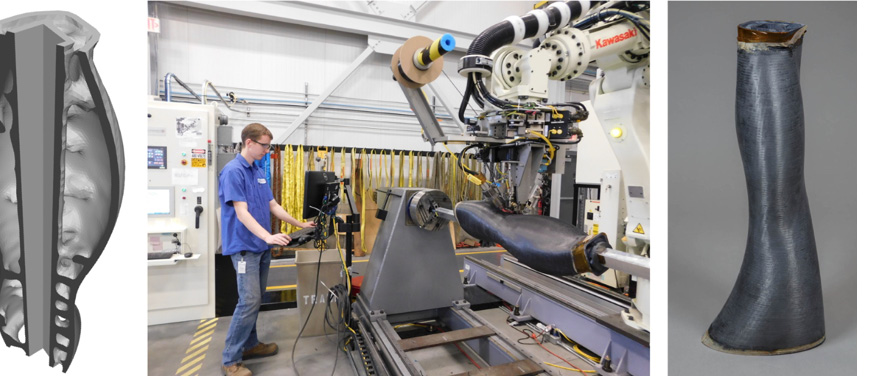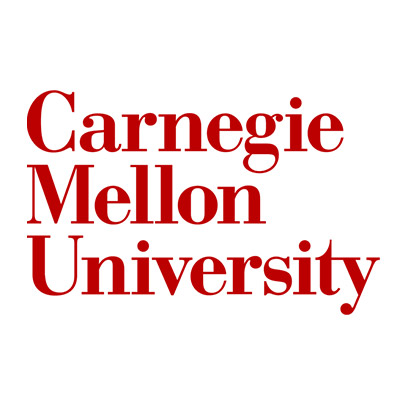


Composite skin being manufactured over a topology optimized structure that can withstand large compacting forces (left: CAD model of optimized design; middle: fiber placement process over the design; right: resulting fly-away core structure).
This project focuses on the development of a computational system and educational materials for optimizing the design of 3D core structures produced by additive manufacturing (AM).
Problem
The design of 3D core structures is a major consideration in the production of highly engineered, lightweight components such as those common in aerospace applications. Core structures serve two critical functions: they provide a solid base for depositing other structural materials, and they serve as a skeletal structure that contributes to the load bearing capacity of the final part. The complexity of both the manufacturing and in-use forces experienced by the core structures prevents the use of existing computational approaches for shape and topology optimization. Hence, existing approaches to designing core structures either cannot take advantage of the design opportunities enabled by additive manufacturing, or they produce over-engineered solutions using ordinary lattice structures.
Objective
The objective of this project was to reduce design times for structurally optimal 3D core structures. The design time aimed to be an order of magnitude reduction from days to hours. A further objective was the simultaneous reduction in fabrication (print) time and material usage through co-optimization of the design and 3D printing process. A substantial increase in geometric freedom for the target shapes offers the potential for major reductions in life-cycle energy costs for operational vehicles containing the proposed core structures due to reduced weight.
Technical Approach
The technical approach was to develop a computational system and educational materials for the optimal design and additive manufacturing of 3D core structures central to the aerospace industry with fused deposition modeling (FDM) technologies. This included investigating advanced solutions using finite element methods, nonlinear high dimensional optimization, and design for additive manufacturing (DFAM). The technology was applied to functional components provided by Automated Dynamics (AD), Aurora Flight Sciences, and United Technologies Research Center (UTRC). This novel design technology aimed to alleviate some of the fundamental limitations associated with current CAD/CAM/CAE/PLM tools and practices. Once the technology validation was complete, it was incorporated into Siemens NXOpen API platform for wide scale dissemination.
Accomplishments
A fully developed software module for 3D optimal shape design for problems involving large force uncertainties was delivered including integration of this software into Siemens’ CAD platform. Successful 3D printing of the three real test cases was designed using the developed software on Stratasys’ 3D printers. A battery of successful 1:1 scale physical tests clearly demonstrated the success of the project. Video and images of all the physical validation studies were captured. Training materials were developed that include a description of alternative methods that can be used for a different parametrization of the model. An article describing the computational algorithms and methods behind the innovation is available at bit.ly/VDEL4058.
Project Participants
Project Principal

Other Project Participants
- Automated Dynamics Corporation
- Aurora Flight Sciences
- Lockheed Martin
- Siemens Industry, Inc.Siemens Industry, Inc.
- Stratasys, Inc.
- United Technologies Corporation
Public Participants
- U.S. Department of Defense
- National Science Foundation
- U.S. Department of Energy
